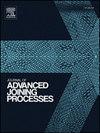Robotized hardfacing on high-strength steels: determination of impact properties with different heat inputs
IF 3.8
Q2 MATERIALS SCIENCE, MULTIDISCIPLINARY
引用次数: 0
Abstract
The use of high-strength steels as a substrate for hardfacing is becoming increasingly common in the industry (e.g., for demolition shears). In the case of joint welding, the weldability of these steels is limited because welding heat has significant affect to the base material. Both softening and hardening can occur in the different sub-zones of heat-affected zone, leading to changes in impact properties. For demolition shears, impact stresses are the most critical loads. Heat input can alter the microstructure of the heat-affected zone, potentially reducing the load-bearing capacity due to the penetration depth of the hardface layer or the buffer layer. Robotization of hardfacing creates equal layers with high precision, which helps the precise comparison. In this study, S690QL and S960QL substrates were investigated under different heat inputs, and the impact properties of these specimens were tested. Instrumented impact test results were analyzed and supplemented with surface fractography. The impact resistance of the S690QL substrate decreases with higher heat input and penetration depth. In contrast, S960QL exhibits different behavior: the use of lowest heat input causes a 226 % increase in impact energy compared with the base material. The underlying reasons for this were identified through force-time curve analysis, where the positive effect of the heat-affected zone is determined. Additionally, the maximum impact forces display different behavior for the two materials: S960QL shows higher impact force except in case of highest heat input, where the S690QL shows better force. These findings are valuable for selecting the appropriate substrate and hardfacing technology for this application and its specific loading conditions.
高强度钢的自动化堆焊:不同热输入下冲击性能的测定
使用高强度钢作为堆焊的基材在工业中变得越来越普遍(例如,用于拆卸剪)。在接头焊接的情况下,由于焊接热对母材有显著影响,这些钢的可焊性受到限制。在热影响区的不同亚区均可发生软化和硬化,从而导致冲击性能的变化。对于拆剪来说,冲击应力是最关键的载荷。热输入可以改变热影响区的微观结构,由于硬面层或缓冲层的渗透深度,可能会降低承载能力。堆焊的自动化制造出高精度的等量层,这有助于精确的比较。在本研究中,研究了S690QL和S960QL基板在不同热输入下的冲击性能,并测试了这些试样的冲击性能。对仪器冲击试验结果进行分析,并辅以表面断口分析。S690QL基板的抗冲击性随热输入和穿透深度的增加而降低。相比之下,S960QL表现出不同的行为:与基材相比,使用最低的热输入导致冲击能量增加226%。通过力-时间曲线分析确定了这种情况的根本原因,其中确定了热影响区的积极影响。此外,两种材料的最大冲击力表现出不同的行为:S960QL显示出更高的冲击力,但在最高热量输入的情况下,S690QL显示出更好的冲击力。这些发现是有价值的选择适当的基材和堆焊技术,为这种应用和其特定的加载条件。
本文章由计算机程序翻译,如有差异,请以英文原文为准。
求助全文
约1分钟内获得全文
求助全文

 求助内容:
求助内容: 应助结果提醒方式:
应助结果提醒方式:


